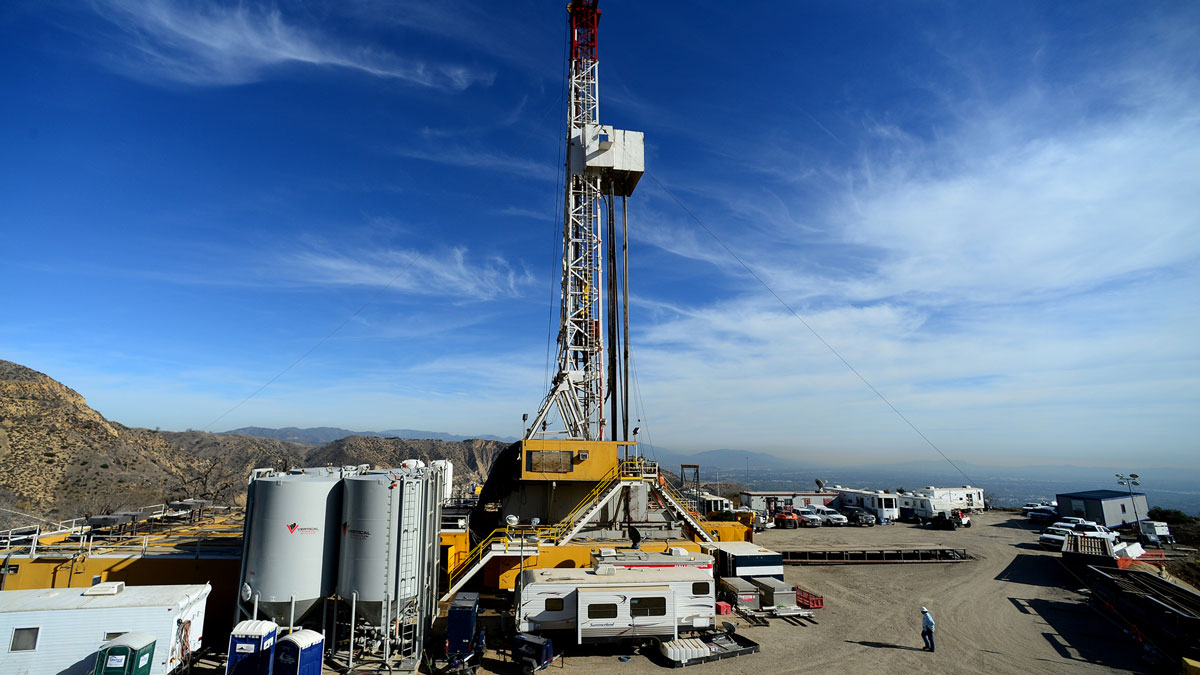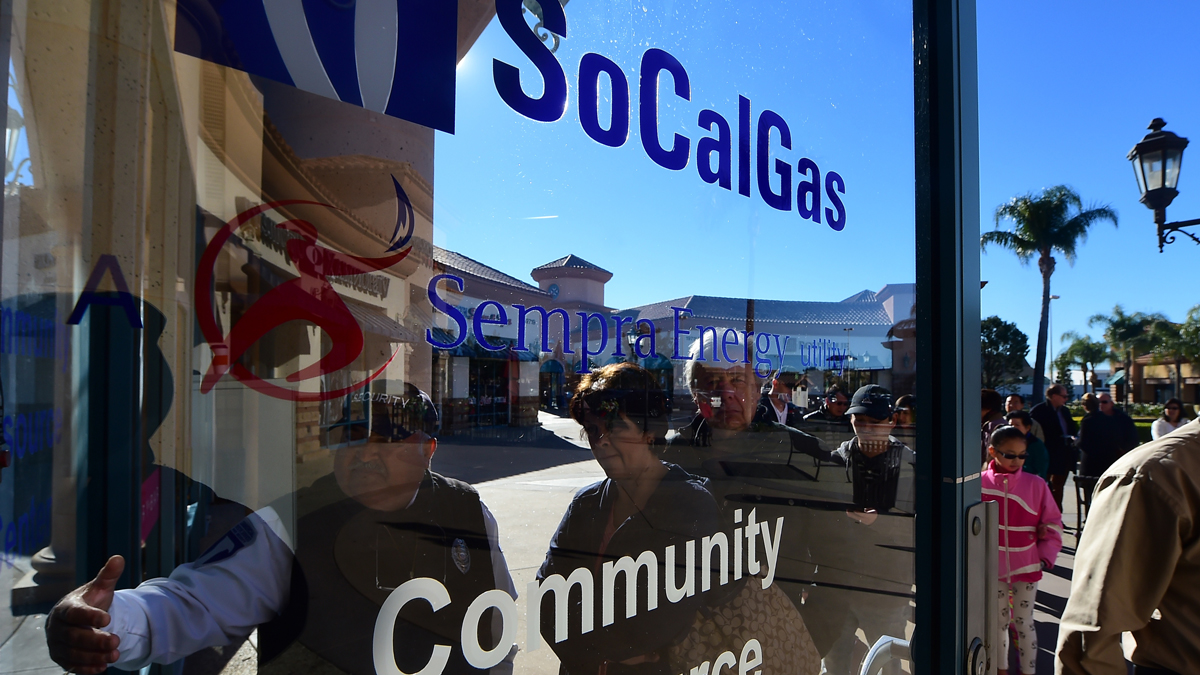
Last Sunday marked seven years since the 2015 Aliso Canyon gas blowout.
It was discovered on Oct. 23, 2015, that gas was escaping from a well within an underground storage facility owned by SoCalGas.
In what’s now known as the largest natural gas leak in U.S. history, a toxic mix of chemicals was released into the San Fernando Valley area, including more than 100,000 tons of methane which severely impacted residents of Porter Ranch and surrounding neighborhoods.
Get top local stories in Southern California delivered to you every morning. Sign up for NBC LA's News Headlines newsletter.
As a result, nearly 10,000 families were displaced from their homes and forced to relocate. Two schools had to close for the school year and thousands reported health symptoms. The well was sealed on Feb. 15, 2016.
Congressman Brad Sherman (D-Sherman Oaks) said he has pushed for the facility’s closure since it first happened and will continue to do so if he is re-elected in the upcoming November 2022 election despite Porter Ranch being outside the new district.
“There has been ample time for SoCalGas and the California Public Utilities Commission (CPUC) to provide a plan for the immediate closure of the facility while maintaining reliable gas service,” he said.
Sherman believes the facility remains an unnecessary and unacceptable risk to the community and urges both the CPUC and SoCalGas to explore other alternatives.
“We’ve seen that a lot can go wrong,” said Sherman, noting that much of the piping in the facility is from the 1950s and has not been replaced. “They should’ve started the process of figuring out an alternative, safe and reliable way for residents to get their gas seven years ago.”
Resident S. Adam Grant said he agrees with Congressman Sherman that the facility poses an unnecessary risk, and he would feel much safer if the facility were closed. Grant is a public-school teacher in Glendale Unified School District and has lived in Porter Ranch for 20 years – about a mile from the well. He considers himself lucky that it didn’t directly affect his family.
There is a small mountain ridge between the well and his residence, so he assumes it was able to block it from getting too bad like it did in the other gated communities downwind. He said he remembers only one of his neighbors having to relocate because the wife had a preexisting asthma condition and the gas leak exacerbated it.
“It’s a little scary to me to think that there’s all that natural gas that’s being stored under pressure within a mile of my home,” Grant said. “God forbid there’s a greater breach or some sort of a spark or ignition that happens and you know, it could blow the top of that mountain off. That’s really the thought that terrifies me the most.”
On Tuesday, the Los Angeles County Department of Public Health appointed UCLA to conduct a proposed first-of-its-kind health study to evaluate the short- and long-term health impacts of the blowout. Research will include clinical evaluations of those who were exposed and rely on community feedback.
The over $20 billion research contract begins this month and will be overseen by a committee of independent scientific experts and regulatory agency representatives. The study is expected to continue for a five-year term with an option to extend for up to five additional one-year periods.
Supervisor Kathryn Barger said the Health Study is the first step in finally bringing answers to residents affected by the incident.
“Residents still have lingering questions about potential impacts to their health and well-being,” she said. “By engaging this highly qualified group of researchers from UCLA, the County is showing it’s committed to bringing forth information that will empower and inform the impacted communities.”
SoCalGas announced in September 2021 that settlement agreements were reached and expected to resolve all material civil litigation against the company related to the leak. CEO Scott Drury said the agreements were an important milestone that would help the community and company “work toward putting this difficult chapter behind us.”
He emphasized that in the years since the leak the company has worked alongside regulators, technical experts, and neighbors to enhance safety at all underground storage facilities.
Former Gov. Jerry Brown first directed the CPUC in 2017 to develop a plan for its closure within ten years. Current Gov. Gavin Newsom has publicly supported Brown’s stance, but there is currently no legal requirement to close it by a set date.
California State Sen. Henry Stern introduced a bill last year that called for the complete closure of the facility by 2027. He later voted against his own bill after the Senate Appropriations Committee changed the bill; the amendments made would’ve allowed it to stay open until 2045.
SoCalGas maintains that closing the facility isn’t feasible because it could result in a natural gas shortage, which would cause prices for the fossil fuel to skyrocket. Representatives for the company claim that in accordance with new state regulations, the Aliso Canyon facility is being operated at a reduced pressure, providing an additional margin of safety.
“Our storage facilities operate by what regulators and experts have called some of the most rigorous safety standards in the country,” Drury said.
Grant said the checks from the settlement are “nothing compared to the aggravation a lot of people suffered.” He and his wife also stressed their concern over how the leak and negative publicity would impact property value in the long-term.
“Now everybody knows where Porter Ranch is, and the fact that we still have this facility here,” Grant said. “Are people going to be willing to move here knowing that? Or be willing to pay me what my property is worth because they must factor in the potential of a leak, or something worse, happening again?”
On Sept. 23, 2022, the CPUC proposed a framework to replace the controversial facility by “using non-gas fired electricity generation and storage, building electrification, and energy efficiency.” But the company declared that for now, the Aliso Canyon facility is needed for SoCalGas to reliably meet energy demand.
Congressman Sherman claims that the matter is personal to him, and at the time his home was close to the blowout. He said there are other ways and other places to store natural gas that don’t put residents at risk and has pleaded with city and state officials to store it further away from the city of Los Angeles.
“We know from the root cause analysis that the blowout was the result of negligence, and they must take full responsibility for the costs of this disaster,” Sherman said. “We need to close this facility down before it happens again.”



